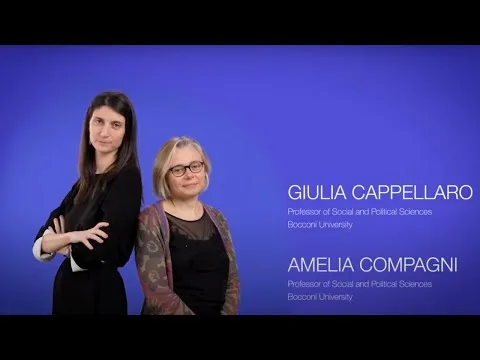
Hiding in Plain Sight: How the Mafia Strategically Uses Ambiguity
In 2016, the Italian National Anti-Mafia Prosecutor claimed that, in understanding Mafia, «we are back to a state of paralyzing confusion». We've come full circle after a 55-year war between Cosa Nostra (the Sicilian Mafia) and the State, in which both actors have been deploying discursive and non-discursive strategies in order, the first, to keep secrecy and, the latter, to dissipate ambiguity, according to the analysis conducted by Bocconi's Giulia Cappellaro and Amelia Compagni, along with Oxford's Eero Vaara, in a paper forthcoming in Academy of Management Journal.
By studying the extreme case of Cosa Nostra, the paper, based on a text analysis of a large corpus of data, including trial transcripts, laws, and bosses' confessions in the 1963-2018 period, is aimed at understanding how ambiguity can be strategically employed by organizations vis-à-vis relevant stakeholders. Ambiguity has, in fact, always been considered problematic for organizations as it leads to immobility and a weak positioning in the market, but recent evidence shows that managers and organizations can also benefit from keeping ambiguous both for strategy-making and to protect themselves from outside negative evaluations and public scrutiny.
The scholars find that «as soon as audiences construct a plausible interpretation of the organization, it shifts to a different type of ambiguity and the game starts over, but with increasing difficulties from the side of audiences», as the lead author Professor Cappellaro says. In particular, the authors identify three types of ambiguity: opacity, i.e. the lack of a conceptual schema for interpreting what the organization is; equivocality, i.e. the plurality of equally plausible interpretations of the organization; and absurdity, i.e. the contraposition of foolish-sounding and paradoxical interpretations of the organization. The study shows how the final shift to absurdity leads audiences to a state of paralyzing confusion.
The study allows also to identify a series of strategies employed by the Mafia to nurture and maintain ambiguity around itself. Three are worthy of attention especially because instances of corporations and legal organizations using similar tactics start to accumulate. First, the Mafiosi cyclically employed a strategy of protective silenceby physically hiding, keeping silent when caught, and forcing a code of silence on local communities. Protective silence was instrumental in nurturing opacity at the beginning of the period of analysis (1963-1983) as well as in amplifying absurdity around the Mafia much later (1994-2018), when paradoxical interpretations of the Mafia emerged. Second, strategies of silencing, that allowed the Mafia to suppress the voice of scrutinizing audiences, occurred through violence in a progressive escalation from violence targeted at specific individuals to symbolic and theatrical acts aimed at undefined audience.
While violence was the means for silencing in the case of Cosa Nostra, offensive strategies are present even in the legal world. «Silence and silencing are emerging as viable strategies among companies wanting to avoid public scrutiny», Prof. Compagni adds. «Recently, we have observed a surge in the use of silencing by legitimate organizations, in the form of public criminalization of activists or spying on them in order to curb the diffusion of critical opinions».
Finally, to create and maintain absurdity, the Mafia succeeded in disorienting the audience using a strategy of hyperbolic disclosing. The Mafiosi disclosed to judges that the Mafia had not merely a legal face, in addition to the illegal one, but that it could even adopt the one of its natural opponent, i.e. the State. This is the time in which a number of top-tier State officers were accused of contiguity and complicity with the Mafia. Confronted with absurdity audiences struggled to reconcile paradoxical interpretations of the Mafia, fell victim of internal dissension and lost effectiveness in contrasting the Mafia. «With absurdity we have identified a novel type of ambiguity, and with hyperbolic disclosing a new strategy that provides empirical evidence of the confounding effects of overly explicit communication and excessive transparency» says Professor Cappellaro.
Giulia Cappellaro, Amelia Compagni, Eero Vaara, Maintaining Strategic Ambiguity for Protection: Struggles Over opacity, Equivocality, and absurdity Around the Sicilian Mafia, In-Press, Academy of Management Journal, DOI: 10.5465/amj.2017.1086.
How the Mafia Dodges Public Scrutiny
